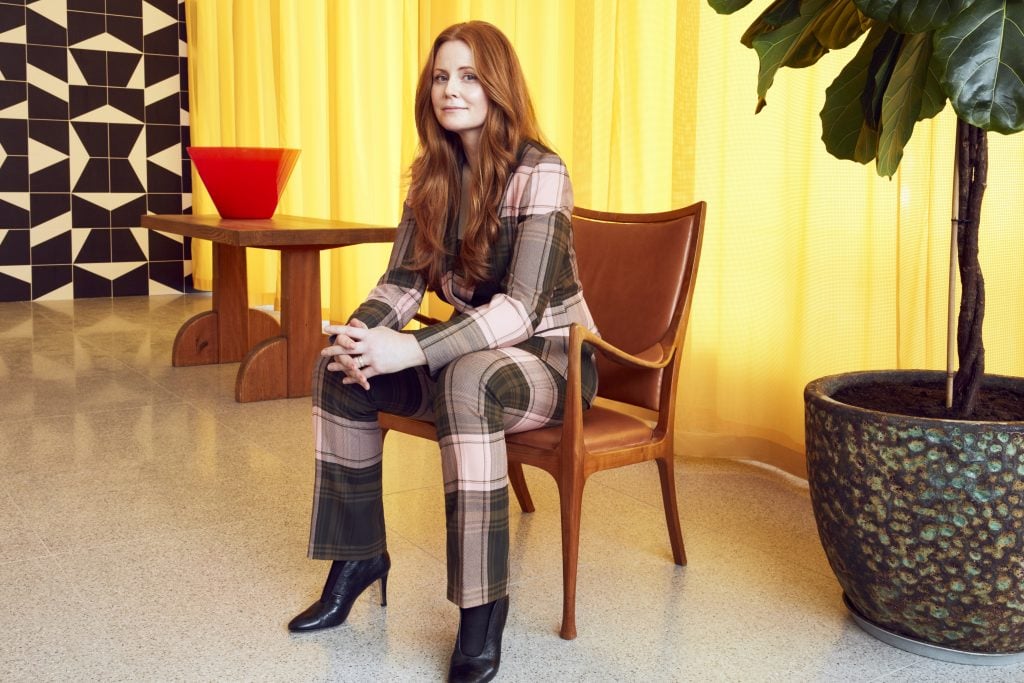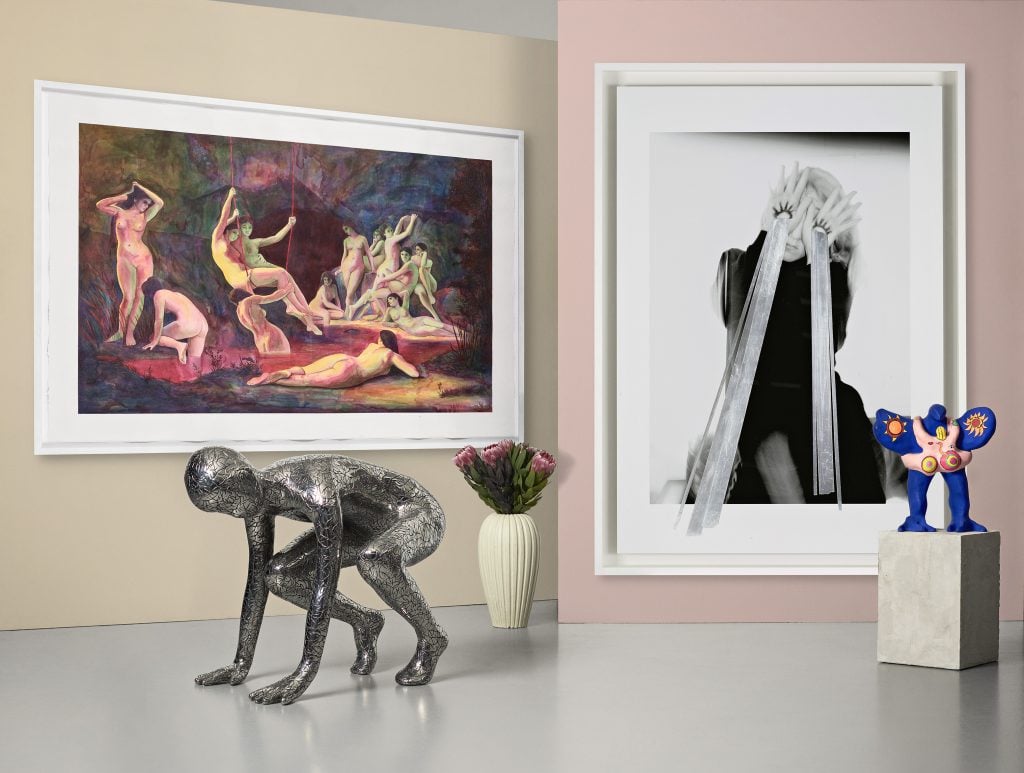Bukowskis CEO Louise Arén on How She Transformed the 150-Year-Old Scandinavian Auction House Into a Digital Power Broker


Artnet Gallery Network

Louise Arén is on a mission. The CEO of Bukowskis, Scandivania’s leading auction house, joined the 150-year-old company in 2015 as its digital and e-commerce director. A little over a year later, she was named CEO. Arén’s meteoric ascent is coupled with a singular vision—to bring Bukowskis to the global vanguard of digital technology, all the while maintaining the company’s esteemed reputation as an art world authority.
Three-and-a-half years on, Bukowskis has spearheaded a massive digital transformation to meet modern demands—and it’s paying off. During the lockdown months of March, April, and May, the auction house saw a 7 percent increase in revenue, year over year, and a 32 percent increase in online traffic. What’s more, under Arén’s leadership, the auction house has turned what was a €6 million deficit into €2 million profit from 2016 to 2018.
We recently spoke with Arén, who shared how she makes it all happen.

Recent contemporary installation on view at Bukowskis. Courtesy of Bukowskis Contemporary Art.
What do you have to keep in mind while bringing digital innovations to a 150-year old auction house?
There is a lot to consider as a leader when implementing a new digital strategy. For instance, with a brand as well known as Bukowskis, the high-end print catalogues have an almost overwhelming institutional respect as an example. Therefore, you have to be crystal clear in your communication both internally and toward customers about what you plan to do and how it will benefit everyone. After that, it’s about implementing change in gradual steps, and not underestimating the effect all these changes have on people’s everyday experience. The biggest challenge for any leader is to dare to drive change because change will always meet resistance.
Describe Bukowskis today.
Bukowskis is now a data-driven company. All interfaces are digitized to support valuation, bidding, contract management, payment, and, to a much greater extent, mobile use, to name a few examples. All our decisions are based on data that gives us the opportunity to be proactive and able to practice real-time analysis and making the best possible decision to move forward as the leading auction house in Scandinavia, but also digital in the forefront globally.
With the recent health situation, are most people buying online?
We have seen a remarkable increase in both online sales and revenue from early March until now with sales from a number of curated fine art auctions resulting in average prices high above the usual. For us, like many other auction houses, it was important to quickly re-direct our sales channels as there was a great deal of uncertainty about this spring´s major hammer auctions. These went extremely well and we managed to break a new world record for the Swedish artist Helmer Osslund and sold four of the five most expensive works of art on the Scandinavian market. We proudly counted more than 2 million visitors online during June, a new record of visitors since going digital.

Recent contemporary installation on view at Bukowskis. Courtesy of Bukowskis Contemporary Art.
Sweden has been at the digital forefront in many regards—how has that culture affected the auction house?
Overall, it is very inspiring, but it requires us to meet customers who are extremely used to digital tools and a high amount of digital service during their customer journey. With our older target groups, it is primarily about being able to offer safe and secure alternatives, primarily during payment and during the bidding process. With the younger target groups, it is just as much about offering them an inspiring shopping environment where everything has to be intuitive, such as liking objects, payment options, and quick deliveries, just like any other modern online business.
What do you think the key changes have been in turning around the auction house?
Our success over the past few years is primarily about us looking at Bukowskis as a modern company where we constantly balance business and art. The incredible knowledge and passion are the starting point in everything we do, but we also made sure to have specialists on all staff functions to secure use of data, analysis and different views on how to move the company forward in regards of high-quality art and design, sustainability, e-commerce, and more.
What do you see as the ideal balance between tradition and innovation?
The most important thing is to nurture what makes Bukowskis unique—and in that lies tremendous knowledge and passion for the objects and a strong and emotional brand that carries the company’s rich history while being a modern digital company. We can see that even our most traditional target groups—the ones used to bidding in our salesroom—frequently take advantage of our digital solutions.
What do you see as the future of auction houses?
I believe in the business model even though in some ways it’s a very old fashion and complex business in a world where everything spins faster and faster. But, the business model itself will not survive unless the unique range of objects that is currently passing through the auction houses remains. And given how many new local and global innovative business models are being established to sell art and design, it will be a challenge if you are not up to date with the latest digital solutions in all areas. The challenge for us did not primarily lie in fine art, but we took a strategic decision a few years ago to cut the volume to focus on curated fine art auctions online, which also gave us a higher turnover for our fine art hammer auctions. In the future, it is also about how well the auction houses manage to communicate emotional values like knowledge, passion, and the urge to be a progressive market-leading auction house attracting new but also keep old customers.

Interior of Bukowskis, Sweden.
How is the next generation of collectors unique and how does Bukowskis connect with them?
The next generation of collectors is first and foremost global, digital, and more knowledgeable than ever about finding the right object for the right price. We meet these customers and collectors through platforms where community is key and transparency an absolute must.
The younger generation is not as interested in the artworks that sell for the highest amount of money, how many million listings we have, or how we stand against other auction houses. They want to be inspired, buy sustainable, and feature unique objects in a unique environment that expresses who they are.
The fact that we play in the secondary market gives us some leverage being a sustainable option, but we have to inspire and connect through spokespeople that are relevant, modern, and progressive. Bukowskis collaborates with artists, galleries, interior designers, musicians, actors, poets, and more to make the most dynamic content for this specific target group, who not only looks for a great piece of art but, furthermore, something for which to aspire.